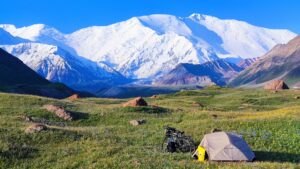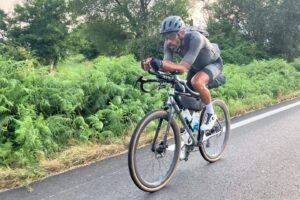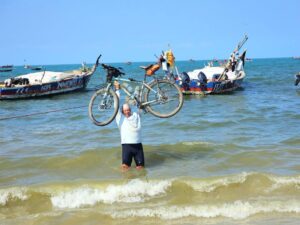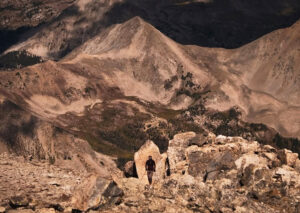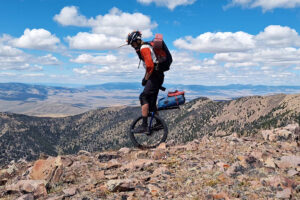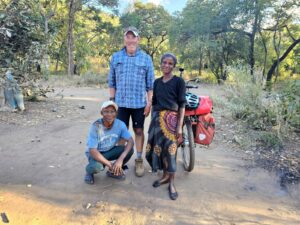In 2023, 25-year-old German cyclist Max Roving set off eastward from his hometown in northern Germany, aiming to “go as far as I’d like, or can afford.” One and a half years later, he has covered around 20,000km across Europe and Asia, crossing rugged and politically sensitive terrain by bicycle. He travels on under $500 a month.
He has trended east since crossing Europe, taking in countries such as Iran, Afghanistan, Pakistan, Mongolia, China, and Japan. As a break, he has also undertaken some hikes along the way, including to Everest Base Camp and the Langtang Valley on the Nepal-Tibet border.
“I’m more of a traveler than a cyclist,” Roving told ExplorersWeb. “I prefer being off the beaten path, even if I only do 40 kilometers a day and push half of that.”
He has occasionally used air or public transport to bridge gaps in his route. He flew from Oman to Kyrgyzstan and Japan to Vietnam, and took buses or trains through parts of China, mainly due to visa limitations and geopolitical restrictions.
Some of the most interesting areas the German has covered are the unpaved mountain passes of Central Afghanistan, the wind-scoured Altai of Mongolia, and the valleys of northern Pakistan.
Pakistan: From the Karakoram to Chitral
In April 2025, Roving entered Pakistan from China’s Xinjiang province via the Khunjerab Pass, the world’s highest international border at 4,700m. Cycling south through the Hunza Valley, he passed the famous Passu Cones and Lake Attabad, camping beside glaciers and towering 7,000m peaks.
“The scenery here was even more impressive than on the Karakoram Highway in Xinjiang, with some of the steepest mountain faces I have ever seen, right next to the road,” he observed.
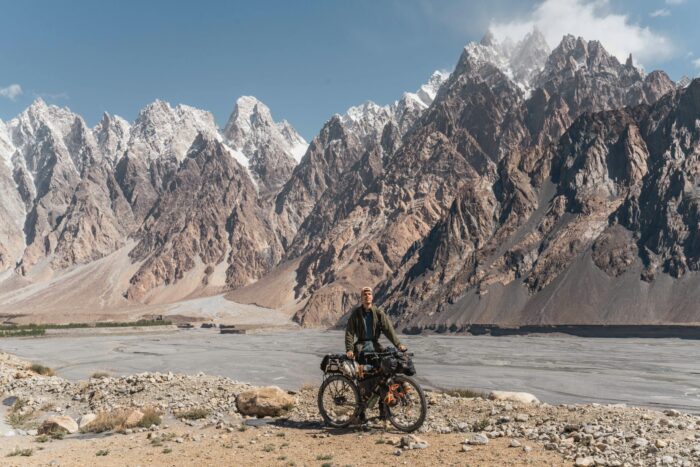
The surreal Passu Cones. Photo: Max Roving
From Gilgit, he turned west toward Chitral, traversing the Shandur Pass at 3,730m. The road was dusty, bumpy, and nearly empty. But the solitude was matched by the hospitality of local people.
“The lack of cars allowed me to appreciate the many beautiful valleys, such as the Ghizer and Phander Valleys.”
The journey came with some constraints: Police insisted on escorting him in certain areas near the Afghan border, for example.
“Shortly before I reached Chitral, the officers told me that they would have to accompany me…something I’m not a fan of, so I decided to skip this bit by bus instead,” he wrote.
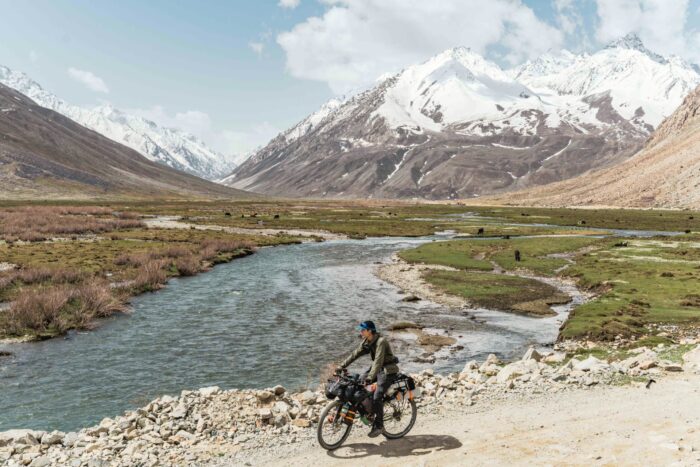
Photo: Max Roving
Roving also explored the Chapursan Valley, a remote 70km corridor reaching the Wakhan Corridor in Afghanistan. Landslides and rockfall often block the road. The German managed to avoid these, but he did get caught in a snowstorm and had to shelter while rocks tumbled onto the road from the steep mountains above.
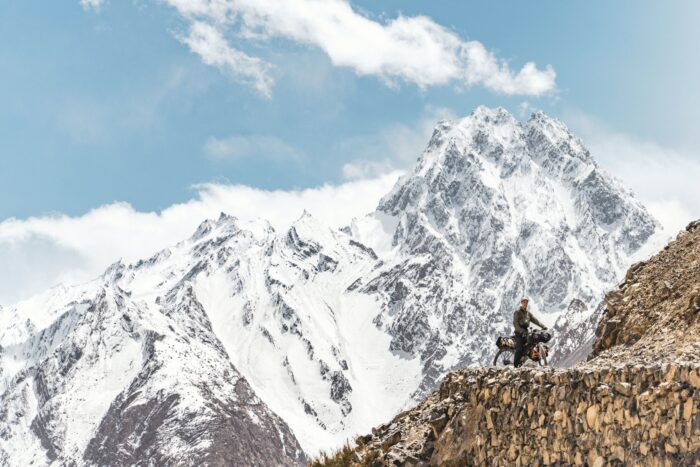
Chapursan Valley. Photo: Max Roving
Central Afghanistan
Roving entered Afghanistan in May 2025 via the Torkham border crossing from Pakistan.
“I had the privilege of exploring Afghanistan on my bicycle, something which wouldn’t have been possible (or advisable) for the majority of the past 40 years,” he wrote on his website.
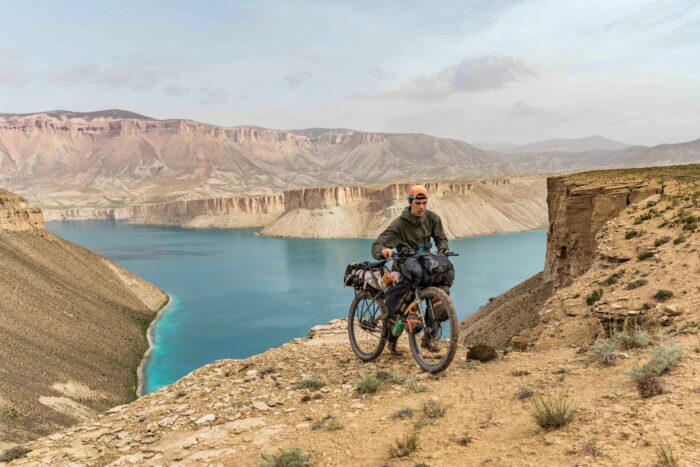
Photo: Max Roving
“The Taliban is trying to encourage tourism, which makes you want to believe that they are confident in having the country under control,” he wrote.
“This encouragement also means that there is no risk of ending up as a political prisoner, which is a possibility in Iran or Russia if you’re traveling on a Western passport.”
He secured a rare all-province travel permit from Kabul’s Ministry of Culture and set out toward the Hazara heartlands in central Afghanistan. The unpaved route was far from easy. He faced steep climbs, rough tracks, and headwinds.
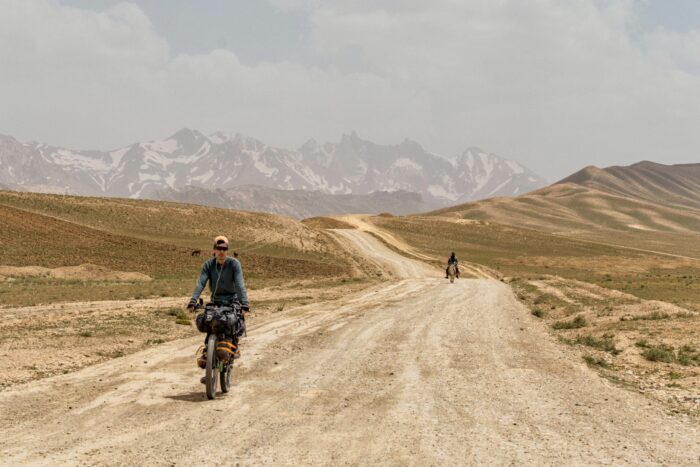
Photo: Max Roving
Roving was drawn by both the remoteness and the human encounters. Most people he met were Hazara (an ethnic minority with Turkic and Mongol roots) and spoke Dari. But many rural people were illiterate, so even Google Translate was of no use.
“I’d recommend either learning both languages to some extent, or make an audio recording of the translation output when you have internet, so you can play it when you don’t, he wrote.”
Taliban checkpoints required regular inspections of his travel permit. In one instance, near the town of Tarkhuj, he was taken to a local security office. “They checked my photos and WhatsApp messages,” he recalled. “But they remained respectful and eventually invited me for lunch.”
His central Afghanistan leg totaled around 460km, but it wasn’t without hazard. A speeding car struck him on his last day, but he walked away with only minor bruises, and his bike was also unharmed.
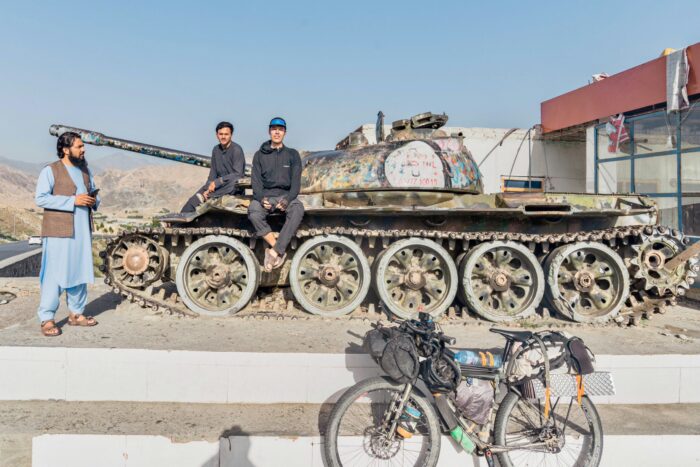
Remnants of past wars. Photo: Max Roving
The Mongolian Steppe
Earlier in his global travels, Roving had crossed from China into western Mongolia, entering a landscape he described as “untouched nature, clear rivers, and perfect camping spots everywhere.”
The crossing led him into the Altai Mountains, a sparsely populated region of Kazakh herders and shamanic traditions.
“Only 20 percent of roads in Mongolia are paved,” he noted, “For me, this makes it much more enjoyable, as I only came across a handful of cars a day.”
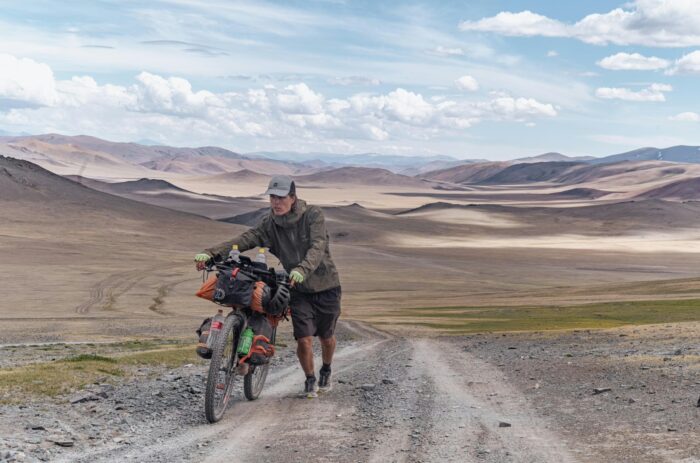
A tedious uphill. Photo: Max Roving
Pushing his fully loaded bike through sandy tracks and over 3,000m passes, Roving encountered the isolation he had long sought.
“Camping won’t ever be an issue in Mongolia,” he wrote, “as long as you manage to avoid the early-summer thunderstorms.”
A river-crossing mishap left him with a deep foot cut, his first injury of his travels. “It made me rethink traveling without a first-aid kit,” he admitted.
He rested in a village while the wound healed, sharing tea with curious children and watching herders move their livestock at sunrise.
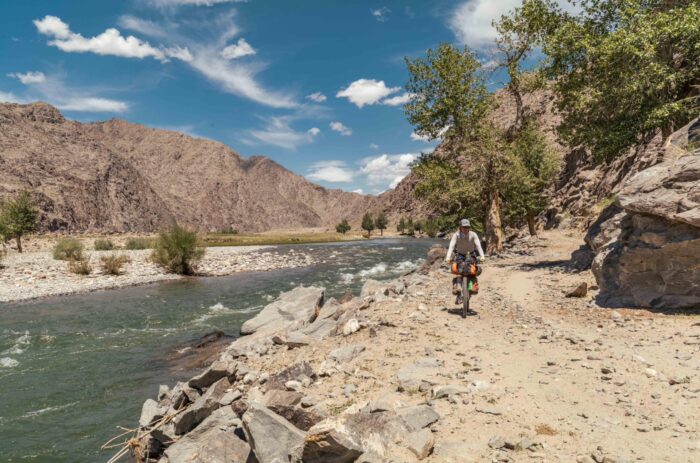
Photo: Max Roving
He noticed how the ethnic Kazakhs of western Mongolia preserved traditions that had long been lost across the border in Kazakhstan. Shamanism mixes with moderate Islam, and despite cultural differences, everyone “seems to get along.”
After 700km of rough dirt roads, he reached Bayan-Ölgii, a province in the west of the country, just in time for Naadam, Mongolia’s national festival of wrestling, archery, and horse racing.
“It felt a bit like a state fair,” he wrote. “I thoroughly enjoyed the show nonetheless, especially after cycling through the remote countryside for weeks.”
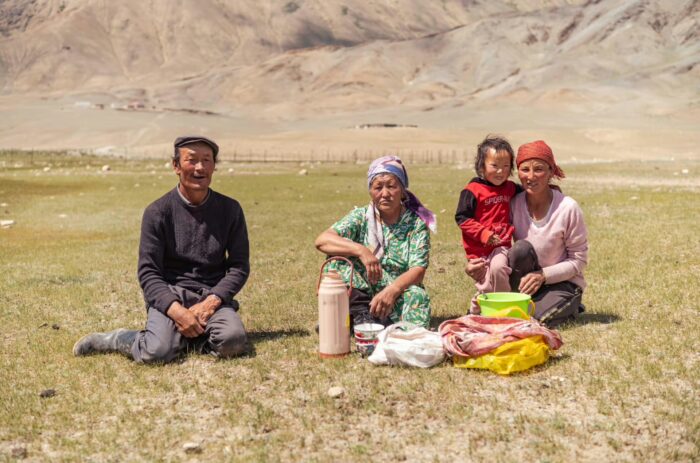
Photo: Max Roving
The road ahead
Roving’s 18-month ride has been defined not by speed, but by immersion. “I much prefer meeting people in all the different countries, different cultures, and, of course, the landscape, because with a bike you can go almost anywhere,” he says.
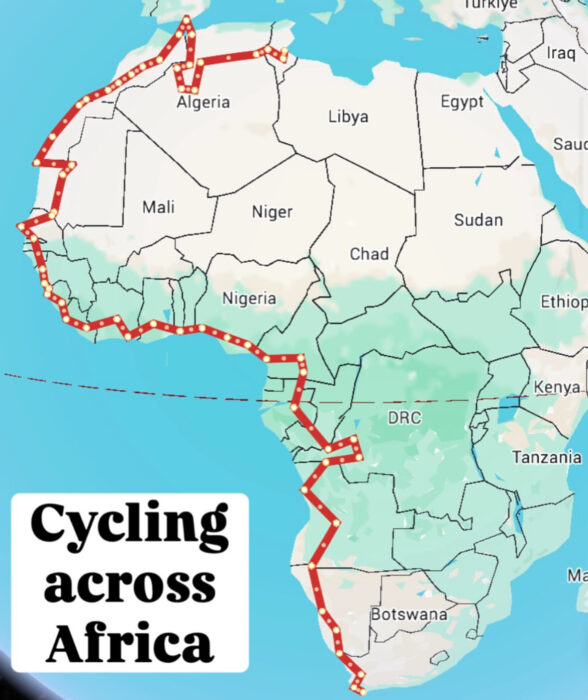
The Africa leg. Photo: Max Roving
After recently closing his Asian chapter in Uzbekistan, he has now moved on to Africa, where he plans to cycle down the west coast.

